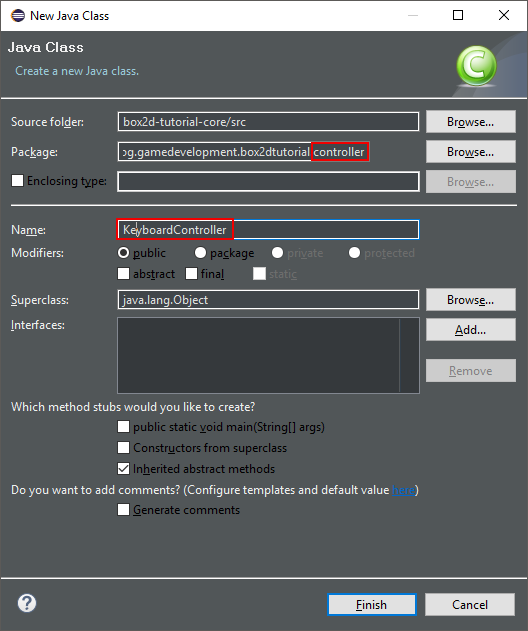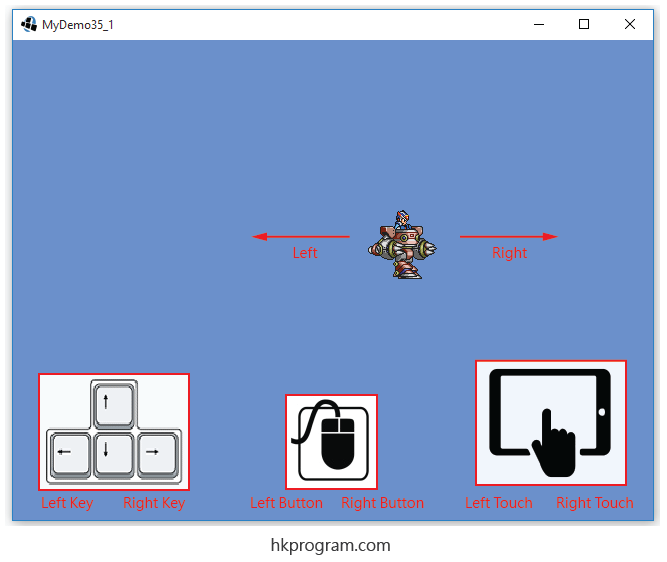

Similar to the TitleScreen class, its constructor takes a HelloWorldGame argument so it can access the shared resources. This class contains all of our game logic. Public class HelloWorldGame extends ApplicationAdapter One simple way to handle this is to use a set of variables that track which screen we’re showing, and then check those variables in the render() and event functions to decide what to display or which action to take.įor example, we might use an enum to track the current state of the game: Our goal is to show different screens that display their own content and react differently to user input. This will only work for basic games, but it introduces some ideas that we’ll reuse when we switch to the more advanced approach. The Simple Approachīefore we get into the libGDX approach to this problem, it’s worth mentioning that we can actually already handle this with a simpler approach. / An InputProcessor is used to receive input events from the keyboard and the touch screen (mouse on the desktop).
#Input screenx screeny libgdx how to
Example The following code shows how to use InputProcessor from . This tutorial introduces the Game and Screen classes, which provide a framework for showing multiple screens. The method mouseMoved() returns whether the input was processed.

This tutorial introduces the Game and Screen classes, which provide a framework for showing multiple screens. The method mouseMoved() has the following parameter. This is okay for testing things out or for simple games, but most real games will contain multiple screens, for example you might contain a title screen, a settings screen, a main game screen, and a game over screen. Now we know how to create a game that contains interactive animations. Import .g2d.Multiple Game Screens Multiple Game Screens tutorial libgdx

#Input screenx screeny libgdx android
Note: if using the ScreenViewport() this will ignore the world measurements and turn back to using pixelsįor android devices if the images are 16/10 using stretch is acceptable as it will stretchĮxtendViewport() tries to fit everything to screen as best it canįitViewport() will use letterbox to fit to screen WIthout it the imageĪspect Ratio is very important for cross platform games it is calculated by height/widthįloat aspectRatio = (float)()/(float)() Ĭamera = new OrthographicCamera(WORLD_WIDTH * aspectRatio,WORLD_HEIGHT) It is also a type of translate so MUST have camera.update(). Translate(viewport.getWidth/2, viewport.getHeight/2) will set the camera so it displays the image at 0,0 and NOTE: if translate is used the camera.update() must be called in the render() This will place the image left corner in centre of the screen the cameras position can be changed so theĬamera moves translate(). Of in dispose() by calling ()Ĭamera looks to the centre of its defined viewĬamera = new OrthographicCamera((),()) So Texture should be defined outside the constructor or disposed Note: The world is defined in terms of arbitrary units (and the sprite in this case is set to the size of the arbitrary units).Īs we need to position image we will use sprite as sprite has position.ĭefining the Texture in the Sprite constructor can lead ot memory leak as when sprite is disposed or out of Viewport - defines the ratio (see Viewport). Camera tells computer what to render this might be whole image or part of it.(use Orthoganal - 2d Camera)


 0 kommentar(er)
0 kommentar(er)
